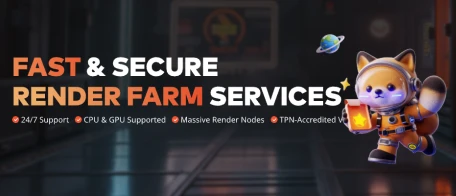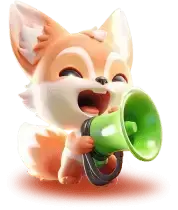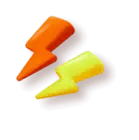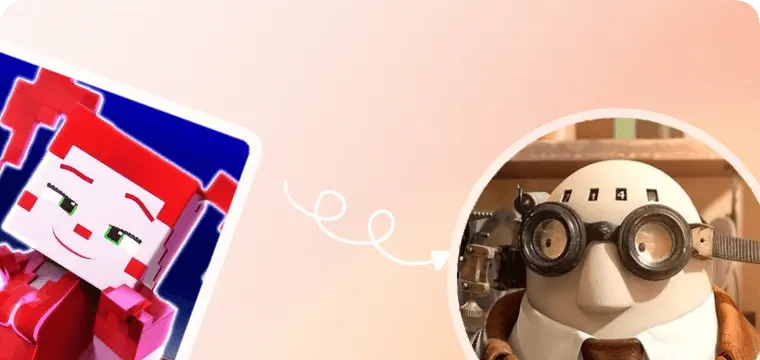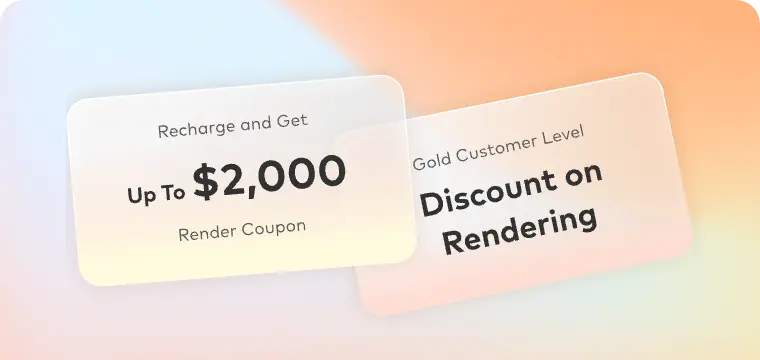
FAST & SECURE
RENDER FARM SERVICES


Why Choose Fox Renderfarm?
Get to Production Faster With On-Demand Rendering
Powerful Rendering
Secure & Confidential
Dedicated Service Team
Support Multiple Software & Plugins
Easy to Use
Flexible Render Farm Pricing
Industry Leading Cloud Render Farm Service
Thousands of Render Nodes
Fire up thousands of rendering nodes instantly
Multi-OS Support
The render farm service runs on Windows, Mac, and Linux with 99.99% uptime
Automatic Detection
Automatically detects IT environment and matches cloud infrastructure service
API Supported
Production pipeline integration via API
Immediate Render
High availability, no waiting necessary
CPU & GPU Rendering
CPU & GPU rendering are both available
Massive SSD Storage
High-performance SSD storage solution that eliminates I/O bottlenecks
High-speed Transmission
Raysync's high-speed transmission allows real-time file upload and download
Fox Renderfarm is Absolutely Secure & Confidential for Customers
ISO27001 Certification
Fox Renderfarm is ISO27001 certified to keep your assets and information secure.
TPN-Accredited Vendor
The Trusted Partner Network (TPN) is owned and managed by the Motion Picture Association (MPA), a leader in third-party entertainment industry assessments.
NDA Available
Non-disclosure agreement is available for customers to protect their rights and interests.
Dedicated Service Team
Fox Renderfarm's professional and dedicated customer service & technical support team are waiting for you!
Partner of multiple-award-winning teams
24/7 Live customer care & technical support
Contact available via WhatsApp/Email/Live chat/Telegram
With Hollywood-level production experience for years
Response time: within 15 mins
Simply Upload, Render And Download Your Projects
With just 4 steps to render your projects
STEP 1
Registration
Create an account with us and get $25 free render coupon as a welcome gift. You can use them to access our awesome cloud rendering service for your creative projects.
STEP 2
Projects Upload
Log in and upload your projects to the web version of Fox Renderfarm.
STEP 3
Rendering
Our system will automatically analyze and render your projects.
STEP 4
Projects Download
Download the rendered frames with a few simple clicks.
Testimonials for Fox Renderfarm
Over 400,000 happy customers from 100+ countries and regions.
Flexible Cloud Render Farm Pricing
Easily estimate the cost before you start rendering.
Calculate Now!
Free Trial
Register and receive $25 of free render coupon.
Competitive Pricing
As low as $0.0306 per core hour.
Render More, Save More
Volume discounts available up to 50%.
Industry Care
Special discounts for teachers, students, educational facilities, and freelancers.
Easily estimate the cost before you start rendering.
Calculate Now!
Learn more details for render farm pricing.
Fox Renderfarm News Center

2025-12-17
Journey Back to Pandora: Avatar: Fire and Ash in Theaters Soon!
The wait is over. Visionary filmmaker James Cameron invites the world to return to the breathtaking bioluminescent world of Pandora with the release of the official trailer for Avatar: Fire and Ash. This first glimpse promises an emotionally charged and visually stunning new chapter, arriving exclusively in theaters on December 19.A Legendary Director’s ReturnWith Avatar: Fire and Ash, James Cameron once again pushes the boundaries of cinematic technology and storytelling. Cameron, who directed, co-wrote, and produced this installment, reunites audiences with the characters who started a global phenomenon. The trailer hints at a deeper, more intense exploration of Pandora’s wonders and threats, solidifying this film as the must-see theatrical event of the holiday season.The Heroes of Pandora: Familiar Faces and New BondsThe trailer reacquaints us with the iconic characters we’ve followed since the beginning:Jake Sully (Sam Worthington): The former Marine, now fully embodied as the leader of the Na’vi, faces his greatest challenge yet to protect his family and home.Neytiri (Zoe Saldaña): The fierce Na’vi warrior’s resolve is tested as new dangers emerge, threatening everything she holds sacred.Central to the story remains the Sully family, whose bonds are the emotional core of the saga. The trailer suggests their unity will be paramount in the coming conflict.An All-Star Ensemble CastAvatar: Fire and Ash boasts an incredible cast, blending returning legends with powerful new performers:Returning Icons: Sigourney Weaver and Stephen Lang return, their characters’ journeys taking unexpected turns. Kate Winslet reprises her role as the free-diving Metkayina leader Ronal.The Next Generation: The young cast, including Britain Dalton (Lo’ak), Trinity Bliss (Tuk), Jack Champion (Spider), and Bailey Bass (Tsireya), steps further into the spotlight, shaping the future of Pandora.New & Returning Forces: The film welcomes Oona Chaplin and sees the return of Cliff Curtis as Tonowari, adding new layers to the rich tapestry of Na’vi clans.A team of storytelling titans forges the epic narrative. The screenplay is by James Cameron, Rick Jaffa & Amanda Silver, from a story by James Cameron, Rick Jaffa, Amanda Silver, Josh Friedman & Shane Salerno. This collaboration ensures a plot rich with the signature blend of heart-pounding action, profound themes of connection and ecology, and intricate character development that defines the Avatar universe.The trailer underscores a vital message: this film is crafted for the big screen. From the awe-inspiring vistas of new Pandoran ecosystems to the intricately detailed motion-capture performances, Avatar: Fire and Ash is designed to be experienced only in theaters. The immersive 3D, groundbreaking visual effects, and thunderous soundscape will transport audiences directly into the heart of the action on December 19.This season, power your holiday projects and step into the new year with boosted rendering capabilities from Fox Renderfarm, a leading cloud rendering service provider and render farm in the CG industry.Special Holiday Offer: Get 100% CPU Render Coupons OR 50% GPU Render Coupons on every recharge above $100! There are 30 days left until the sale ends!Let your creativity shine. We provide a reliable, powerful cloud rendering solution so you can focus on what you do best: creating magic.👉 Learn more and unwrap the deal here: https://bit.ly/4pw6LcFFrom all of us at Fox Renderfarm, we wish you a festive season filled with joy, inspiration, and unparalleled creativity.
More

2025-12-02
Pixar and Disney Leap Into a Hidden World with "Hoppers"
Pixar Animation Studios and Walt Disney Pictures have unveiled the first trailer for their next animated adventure, "Hoppers," a film that promises to take the studio's signature heart, humor, and breathtaking animation to a scale we've never seen before—literally. And it has already sparked its first adorable mystery: a beaver in a miniature crown.A Secret Society Under Our FeetThe trailer opens not on sprawling landscapes or city skylines, but on a single, dewy blade of grass. As the camera plunges, a bustling, ingeniously crafted world is revealed, built from forgotten human objects: a village in a discarded gardening pot, bridges made of clothespins, and lanterns fashioned from bottle caps. This is the world of the Hoppers, a community of tiny, ingenious creatures who have thrived in secret, living by a simple, strict rule: Never be seen by the "Giants" (humans).Our guide into this miniature universe is Pip (voiced by newcomer Milo Rivera), a curious and impulsive young Hopper who dreams of exploration beyond the safe confines of the garden. His cautious older sister, Hazel (voiced by Rachel Zegler), is his constant, worried shadow, more intent on memorizing the "Rules of Staying Hidden" than breaking them.The Adventure That Changes EverythingThe tranquil order of the Hopper colony is upended when a mysterious, glittering artifact from the human world—a simple yet wondrous soda tab—falls into their territory. When the colony's stern, rule-abiding leader, Elder Burdock (voiced by Sterling K. Brown), declares it a dangerous threat to be disposed of, Pip and Hazel find themselves on opposite sides of a growing debate. Their disagreement sparks an accidental journey that catapults them into the terrifying and awe-inspiring "Giant Zone"—a human house.The trailer thrills with sequences of both peril and wonder: Pip and Hazel dodging a colossal vacuum cleaner, using a stack of books as a mountainous climbing wall, and forging an unlikely alliance with a philosophical, retired toy robot (voiced by Keegan-Michael Key).A Regal, Rodent-Sized MysteryBut the moment that has set the internet abuzz comes in a single, blink-and-you'll-miss-it shot: a smooth-talking, confidently smiling beaver (voice yet to be revealed), perched in a tiny rowboat… wearing a perfectly fitted, jeweled little crown. The question on every fan's mind is now official: But HOW did he get a little crown?? Is he the self-appointed king of a stream? Did he win it in a showdown with a dollhouse? The mystery of the crowned beaver is now one of the film's most charming and intriguing puzzles.Visual Splendor and Emotional DepthTrue to Pixar form, "Hoppers" is visually stunning. The texture of a carpet becomes a vast forest, a sunbeam through a window is a cathedral of light, and a puddle on the kitchen floor is an inland sea. The scale allows animators to play with perspective in ways that feel both fresh and inherently cinematic.But at its core, the film asks classic, resonant Pixar questions: What does it mean to be brave? Is safety more important than understanding? Can two worlds, operating on vastly different scales, ever learn to coexist?Directed by veteran Pixar storyteller Jane Park (co-director of Luca), "Hoppers" looks to be a joyous, poignant, and adventurous celebration of seeing the world—and our place in it—from a brand new angle.The adventure begins in theaters on March 6, 2026. Bring Your Own Miniature Worlds to LifeFeeling inspired to build your own intricate worlds? Just as Pixar’s animators craft unseen universes, creators everywhere are bringing their own visions to life. This season, power your holiday projects and step into the new year with boosted rendering capabilities from Fox Renderfarm, a leading cloud rendering service provider and render farm in the CG industry.Special Holiday Offer: Get 100% CPU Render Coupons OR 50% GPU Render Coupons on every recharge above $100! There are 30 days left until the sale ends!Let your creativity shine. We provide a reliable, powerful cloud rendering solution so you can focus on what you do best: creating magic.👉 Learn more and unwrap the deal here: https://bit.ly/4pw6LcFFrom all of us at Fox Renderfarm, we wish you a festive season filled with joy, inspiration, and unparalleled creativity.
More

2025-11-28
Skeletal Animation Explained: A Complete Guide for 3D Characters
Imagine a video game where your character runs, jumps, and fights with fluid, lifelike movements. Behind these actions lies a powerful technique called Skeletal Animation, which uses a digital skeleton to control how characters move.In this article, we will dive into the world of skeletal animation, exploring its key principles, how bone-based rigging works, and popular modeling softwares used by 3D animators to create smooth 3D character animations. Part 1. What is the Skeletal Animation Technique?Skeletal Animation, also called bone animation, is a method used in 3D graphics to make characters move in a smooth and natural way. Instead of moving the whole character, one piece at a time, artists build an invisible structure inside the model. Thus, this process or structure is called a skeleton, made of joints and bones. Plus, each bone helps control a part of the character’s body, like an arm or head.Once the skeleton is added to the character, the artist can move the bones to create motion. This makes it much easier to animate walking or waving. The surface or skin of the character follows the movement of the bones, which is known as bone animation. Through bone animation, you can animate characters or objects by controlling an underlying “skeleton” structure instead of manipulating each individual vertex of a model. Part 2. How Skeletal Animation Works?Before understanding how skeletal animation works, we first need to know what it is composed of. Generally, skeletal animation consists of the following four components:1. BonesThe core structural elements of the skeleton. Each bone defines a local coordinate space and is connected to other bones. There is a hierarchical relationship between bones, meaning a parent–child structure: the movement or rotation of a parent bone affects all of its child bones.2. JointsThe nodes connecting bones, which define possible rotations and relative motion between bones.3. Skeleton RootThe root node of the skeleton, usually at the character’s center or pelvis, which defines the overall position and orientation of the skeleton.4. Mesh / SkinThe visible 3D surface attached to the skeleton. It is a polygonal mesh that wraps around the skeleton and deforms based on the movement of the underlying bones.When a bone moves or rotates, the mesh moves with it. As an example, if you move the arm bone, the whole arm of the character will follow. Artists can create movements like walking or jumping by moving and rotating these bones. This process is called skeletal animation, and it helps artists save time. Apart from redrawing every moment frame by frame, they just move the bones, and the animation updates automatically. Part 3. Main Process of Creating Skeletal AnimationMoving forward, creating skeletal animation takes a few straightforward steps that help turn a still 3D model into a moving character. Each step builds on the last to make sure the result is smooth and ready for animation. Thus, let's explore how to create skeletal animation:Modeling: The process begins with designing the 3D characters as artists create the shape and details of the model using simple tools. This stage only focuses on the outside design without adding any bones or movement.Rigging: At this stage, a skeleton is added inside the 3D model with bones and joints that act like the real body. This structure is placed with extreme precision to let the character move according to the requirements.Skinning: In this stage, the mesh moves when the bones move, as it is linked to the bones. In addition, it is the core of smooth bone animation and helps parts like arms or legs bend naturally.Animating: Artists create motion by setting bone animation positions frame by frame, which are connected to form actions like running or jumping. Plus, this timeline helps control the speed and flow of each move.Refining: Once the basic motion is ready, artists smooth out rough movements and fix minor issues. This step adds fine touches to make the animation look clean and professional.Exporting/Integration: The final animation is saved and prepared for use. Artists can export the file and add it to games, movies, or apps. Part 4. Popular Skeletal Animation SoftwareSeveral software applications are industry standards for this work.Autodesk Maya is a leading professional tool. It supports complex rigging and bone hierarchies. The software provides robust animation and deformation tools. Its strong integration with other pipelines is a key benefit.Blender is a powerful, free, and open-source skeletal animation software. It offers a complete suite of tools. These tools include modeling, rigging, and skeletal animation. Blender also handles mesh deformation and rendering.Autodesk 3ds Max is another widely used application for animated bones. It is often chosen for character and environmental animation. Its animation and rigging features are well-suited for game development and visualizations. Pro Tip for 3D Artists: Improve 3D Rendering EfficiencyAfter learning the whole process of creating skeletal animation, it needs to be rendered into images or videos. Yet, rendering can take a long time and uses up a lot of computer power. That's why many artists look for faster and smarter ways to handle this part of the project. A great solution is to use an online render farm service like Fox Renderfarm.It allows you to render your projects using powerful online servers instead of your own device. This render farm also supports many tools and plugins, including Blender, Maya and Unreal Engine. When working on a simple scene or a whole film project, opting for this service can save you hours or even days. For any sort of issues you come across at any time, contacting the support team through live chat, WhatsApp, or email is an effortless task.Key FeaturesRendering Support: It even lets you opt for CPU or GPU rendering based on your project’s needs. This flexibility is significant because some software works better with a GPU, while others may require CPU power.Safe & Secure: It is ISO27001 certified and is a TPN-accredited vendor, which means it follows strong safety rules. You can also request an NDA for added peace of mind during projects.Render Nodes: Fox Renderfarm gives you access to thousands of powerful machines called render nodes. This means your job can be divided and processed in parts, all at once.API Support: When you’re part of a big studio, you can use the API to connect Fox Renderfarm with your internal tools and workflows. It makes adding rendering to your production process easier without changing how your team works.SSD Storage: All data is saved on fast SSD drives that help prevent slowdowns or file access issues. This keeps your uploads and downloads running at full speed, even with large or complex files. Part 5. Advantages of Skeletal AnimationUpon understanding how it works, it's time to explore the key benefits. From saving time to making lifelike motion easier, bone animation offers several strong advantages in 3D production. Here are some of the key advantages of this type of animation:Reusable Skeletons: Opting for it lets you use the same skeleton on different 3D models. That capability saves hours of work because you don’t need to build a new rig for every character.Natural Movement: Bone animation allows characters to move in a realistic and flexible way. By controlling each bone, you can bend arms, legs, or the neck smoothly.Character Control: Skeletal systems make it simple to move body parts by adjusting just a few bones. You don’t need to edit the full 3D shape as it moves the skeleton faster and more precisely.Lightweight Files: Instead of saving many detailed frames, skeletal animation saves only the bone movement data. This keeps the file size small. Moreover, it’s helpful in games or mobile apps where speed and memory are important.Cheap: Since skeletal animation is flexible and faster to create, it reduces overall production time and costs. Therefore, studios can focus more on creativity rather than technical limits. ConclusionTo conclude, skeletal animation makes 3D character movement smoother and easier to manage. It helps artists save time and bring lifelike motion to games and films without redrawing every frame. To render your work quickly and with excellent quality, use Fox Renderfarm. It supports skeletal animation projects and offers strong, fast, and secure cloud rendering services for all creators.
More



